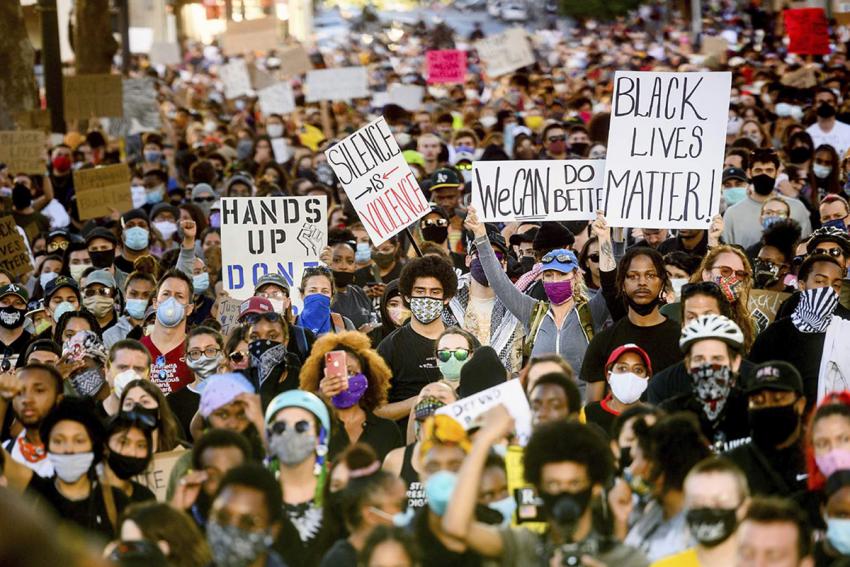McCreery Encourages Students to Understand “Strategic Nonviolence” in First-Year Seminar

By Nikolai Kachuyevski ’21
For Allyson McCreery, who has been teaching “Strategic Nonviolence & Civil Disobedience” since 2013, it is important that her students come away with the tools necessary to be able to assess civil resistance movements: how they’re organized and what components make them up.
“Students are critically analyzing different movements and assessing and utilizing a framework that we as a class build,” said McCreery, program support specialist for the International Peace and Conflict Resolution program and instructor of the First Year Seminar (FYS).
To provide students with the skills they need to be able to assess movements, the class examines moments of civil resistance cases across centuries of American history as well as international examples, said McCreery. Although the class focuses on historical examples, they do explore current examples of civil resistance, such as the Black Lives Matter (BLM) protests that have occurred continuously for the past six years. The class focuses on movements individually rather than comparing or grouping them together. They examine what makes a movement successful or unsuccessful and the reasons behind that, then use this knowledge to build comparative analysis in their own research for the class.
McCreery explains that it is easier for the class to study past events since they can examine where or in what ways movements have excelled and where they have faltered, and use this observation to assess movements of today.
As well as examining civil resistance cases and learning terminology associated with strategic nonviolence and civil disobedience, the class watches documentaries and films such as A Force More Powerful, Selma, and Cesar Chavez, and listens to protest music that mobilizes movements. This sparks discussions in the class of the portrayal of civil disobedience in film when compared to reality, as well as the role of music in civil resistance movements. The class also spent a week discussing the FYS Common Read, How to Be an Antiracist by Ibram X. Kendi and ways that students can become better antiracists.
In a non-pandemic atmosphere, the class would visit the National Museum of African American History and Culture and the National Museum of the American Indian, both in Washington D.C. McCreery is hoping to simulate something similar to the museum visits in a virtual space, including a virtual tour of the Jim Crow Museum of Racist Memorabilia, in collaboration with other FYS instructors, Dr. Jonathan Shandell, associate professor of Theater Arts, and Stephen Tyson, Jr., ’13M, an adjunct professor of Graduate and Undergraduate Studies and recording artist.
The class has undergone other changes due to the pandemic as well. Under normal circumstances, both sections of the course would meet once a month, pizza would be ordered, and they would attempt to put the skills they are learning in class to practice, discuss their findings, and hear from guest speakers. In the past, Tyson would visit these monthly meetings and perform a few songs; this year he has joined the class discussion and spoken to the larger role of hiphop in promoting peace.
This semester, McCreery has taken these monthly meetings to Zoom, where both sections of the course can discuss civil resistance and how to put skills they are learning in the course to use. These critical analysis skills and knowledge of civil resistance is what McCreery hopes the students carry forward, creating change and promoting equity, justice, and peace in their own environments.


